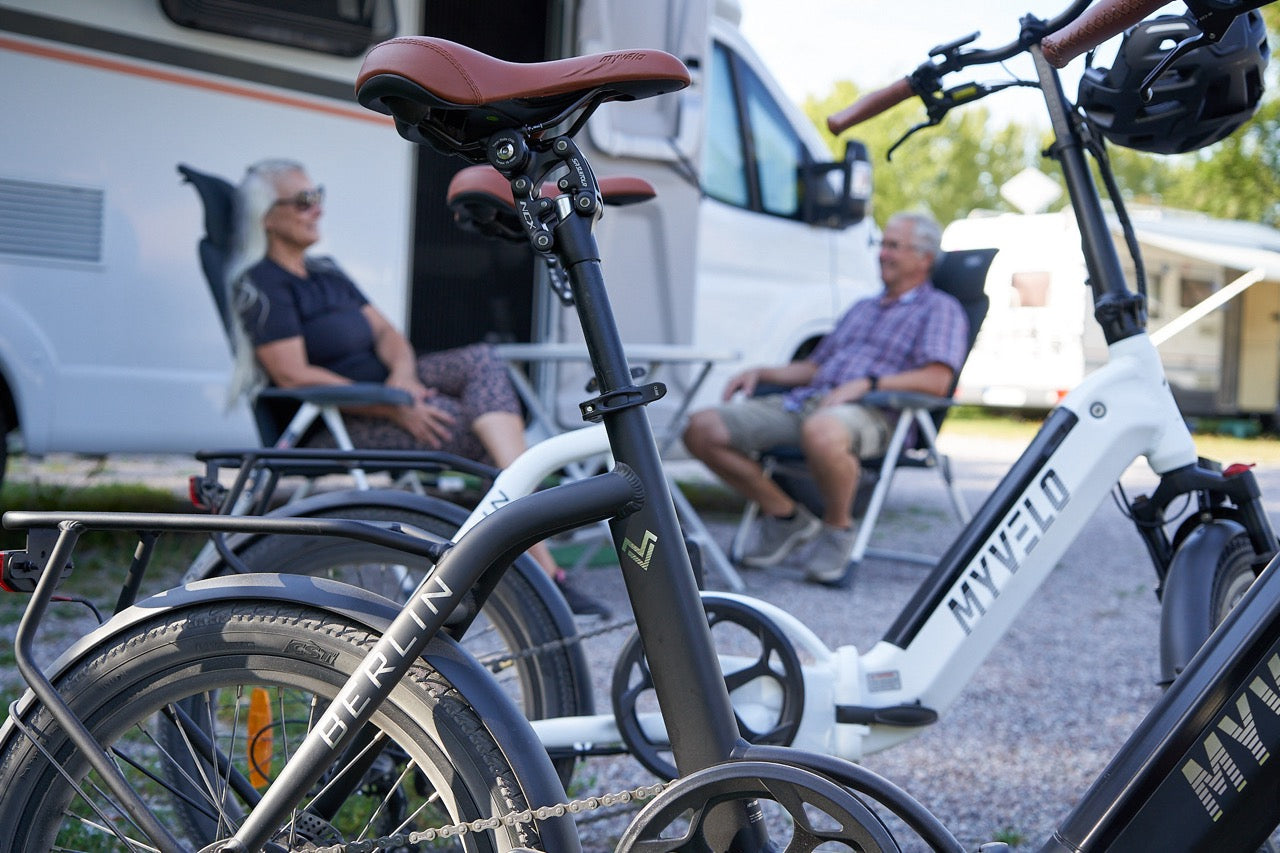

The History of the Folding Bicycle: A Journey Through Time and Technology
Von Helena Burgardt |
3 minutes read time

The Beginnings: From Idea to Implementation
The history of the folding bicycle begins in the late 19th century, a time when the bicycle was becoming increasingly popular as a means of transport. The first patented folding bicycle was developed in 1895 by the British company " Grout ". This early model was primitive, but the idea of a foldable bicycle that could be easily transported and stored was born.

Origin of the idea: The first known mention of a folding bicycle dates back to the 1880s, when the American inventor Emmit G. Latta designed a foldable bicycle . Although it was never mass-produced, it laid the foundation for future developments.
The breakthrough: military use
The folding bicycle was first widely used in the military. During the First World War, soldiers used folding bicycles to increase their mobility. The British "BSA Airborne Bicycle", which was developed for parachutists, became particularly well-known. This model was light, robust and could be quickly folded up and transported.
Influence of the military: The folding bicycle enabled soldiers to move efficiently even in difficult terrain. The construction was so stable that it could withstand the harsh conditions of war.
The Golden Years: Folding Bikes in Civilian Life
After the war, folding bikes experienced a boom in the civilian sector. Folding bikes became increasingly popular, especially in the 1960s and 1970s. They were seen as a practical solution for commuters and city dwellers who needed a space-saving means of transport.
The boom of the 60s and 70s: During this period, many iconic models were created, such as the " Raleigh Twenty " and the "Dahon". The latter was developed by Dr. David Hon, an American physicist, and set new standards in the design and functionality of folding bikes.
Technological Advances: Materials and Design
Over time, the materials and designs of folding bikes became more sophisticated. In the 1980s and 1990s, lighter and stronger materials such as aluminum and carbon fiber were used. This allowed for even better transportability and further increased the popularity of folding bikes.
Innovative materials: The use of aluminum and carbon fiber revolutionized the production of folding bikes. These materials are not only lighter but also more robust, which improves the lifespan and handling of the bikes.
The modern folding bike: A high-tech miracle
Today, folding bikes are high-tech wonders that are not only functional but stylish too. Brands like MYVELO, Brompton and Tern set the standard for design, comfort and performance. Modern folding bikes offer a variety of features, such as electric assistance, quick folding mechanisms and ergonomic designs, making them a popular choice for commuters and cyclists worldwide.
Electric support and modern features: The integration of electric motors into folding bikes has expanded their possible uses enormously. E-bikes offer additional support, which is particularly beneficial on long distances or hilly terrain.
The Future of the Folding Bike

The future of the folding bike looks promising. With the growing importance of sustainable mobility and urban transport, folding bikes will continue to play an important role. Future innovations could include even lighter materials, more efficient folding mechanisms and more advanced electric drives.
Sustainability and urbanization: Given global challenges such as climate change and urbanization, the folding bike offers an environmentally friendly and efficient solution for urban transport. It combines the advantages of the bicycle with the compactness that is often required in urban environments. The MYVELO Zurich e-folding bike , for example, is an ideal means of transport for your everyday life and your vacation.
Conclusion: A versatile and timeless means of transport
The history of the folding bicycle is one of innovation and adaptation. From early military applications to modern, technologically advanced models, the folding bicycle has proven time and again to be an indispensable means of transport. Whether for the daily commute, for leisure trips or as part of a sustainable lifestyle, the folding bicycle remains a symbol of practical mobility and engineering.
Final thoughts: If you're looking for a versatile, space-saving and environmentally friendly mode of transport, a folding bike could be just what you need. It combines the freedom of cycling with the flexibility of a compact design - a real asset to any urban environment.
https://faltesel.de/klapprad-nur-alt-oder-nostalgie/
https://www.singletracks.com/mtb-gear/folding-mountain-bikes-a-cool-history-but-do-they-shred/





